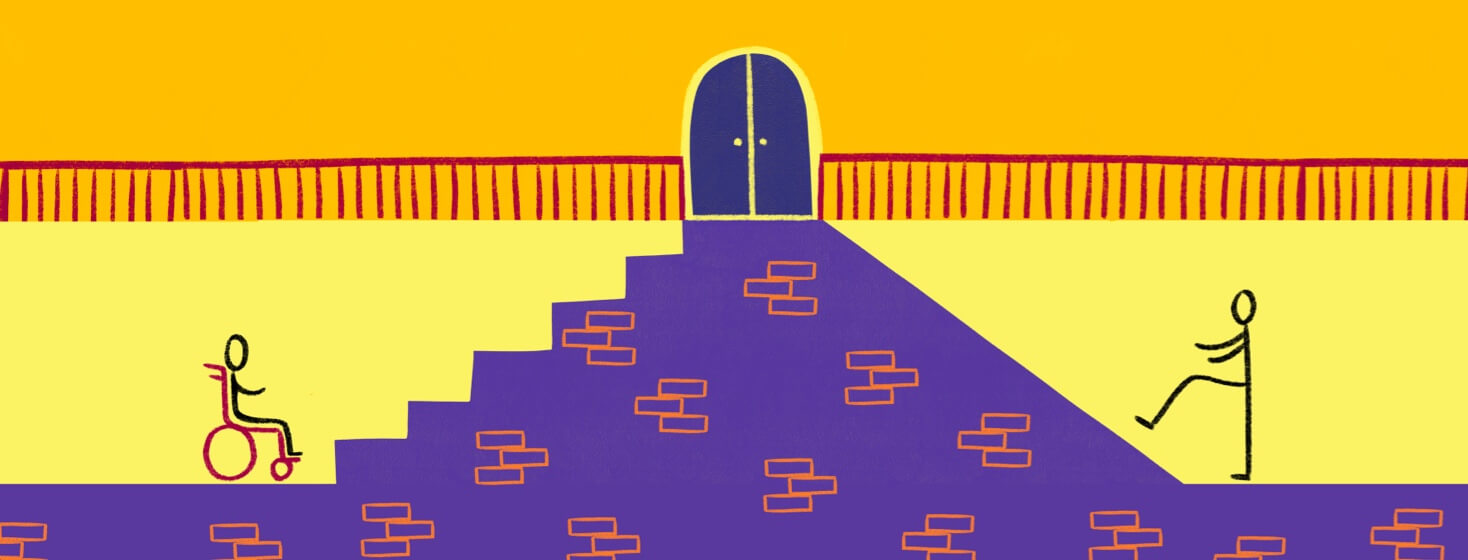ADA Access: Complaints and Compliance
I recently visited my manicurist. She shared that she hoped to hire another nail technician to help her manage her growing client base. This nail technician possessed expert training in a unique manicure procedure that’s fairly new. It’s what made hiring her appealing to my manicurist.
Accessibility matters
However, when my manicurist invited her to visit the salon and show off her skills, there was a problem: no elevator. The nail technician with specialized training also happens to use a wheelchair. However, she couldn’t access the second-floor salon, she couldn’t take the job.
My manicurist was shocked to discover the building she was renting from didn’t seem compliant with regulations outlined by the Americans with Disabilities Act (ADA) (more on this, below). However, I’m willing to bet that many of you reading this — who use assistive devices, or care for someone who does, aren’t shocked by this at all.
About the ADA
This civil rights law, enacted in 1990, prohibits discrimination against individuals with disabilities in all areas of public life, including jobs, schools, transportation, and all public and private places open to the general public.1
Influencing change
In early 1990, more than 1,000 people in the ADAPT protest marched from the White House to the US Capitol. Their aim was to physically demonstrate how inaccessible architecture keenly affects the daily lives of people with disabilities. Sixty of these demonstrators left their mobility devices at the foot of the Capitol building and crawled up the steps in an effort known as the “Capitol Crawl.”2
Though legal protection against all levels of discrimination lies at the heart of the ADA, it was access to physical spaces for people with disabilities that likely inspired the signing of the ADA into law by President George H.W. Bush just a few months after the Capitol Crawl.2
ADA accessibility standards
These standards, issued by the Department of Justice (DOJ) and the Department of Transportation (DOT), exist to ensure that all people with disabilities enjoy physical access to all public accommodation, commercial facilities, and state and local government facilities (including new construction, alterations, and additions).3
Access considerations include many elements of building design, such as interior elevators and corridors, exterior ramps and curbs, bathroom and eating spaces, doors and windows, railings, benches, and so much more. The ADA Access Board provides comprehensive baseline guidelines as the foundation for these standards.3,4
About ADA compliance
When private and public entities build or revamp structures to meet accessibility requirements set forth by the ADA, they’re said to be in compliance. In other words, they’re following the rules in an effort to enforce anti-discrimination laws, policies, and regulations that exist to protect the civil rights of the disabled.
ADA noncompliance
When a structure operated by a private or public entity fails to meet accessibility requirements—such as the building described above which lacks an elevator to the second floor—they may be violating ADA codes. The keyword here? “May.” Some buildings lacking proper access may be exempted. For instance, in the case of the salon building, it has two stories, which makes it exempt from ADA Title III compliance.5
What about accessibility at events?
All public events, including conferences, trade shows, and meetings, must also be ADA compliant. Most organizations and businesses which plan events now follow some version of ADA-specific best practices to ensure they can remove common accessibility barriers at their venues and provide more inclusive experiences for all who attend.6
Lacking access? What you can do
If you’re feeling locked out because of access issues, you can:
- reach out to the building or business owners with your concerns and see if they act on your requests
- publicly describe access issues and ADA non-compliance concerns in social media or write letters to the editor of the local paper to raise awareness
- do you due diligence and file a formal complaint with the proper authority
Local access issues
If an access issue arises with a local government, public facility, or private business serving the public, the best approach is to file an ADA complaint. You don’t need to be disabled to file a complaint. All ADA complaints alleging disability discrimination can be filed online, by mail, or via fax.7-9
Event access issues
If you experience accessibility issues at an event, you can reach out to the event organizer, whose name and contact information may be found at the event website, on the event program, or live at the event itself. Trade show planning organizations, like the International Association of Exhibitions and Events (IAEE), also require that all events generated under their auspices conform to ADA requirements. You can reach out to these umbrella organizations with complaints as well.7-9

Join the conversation